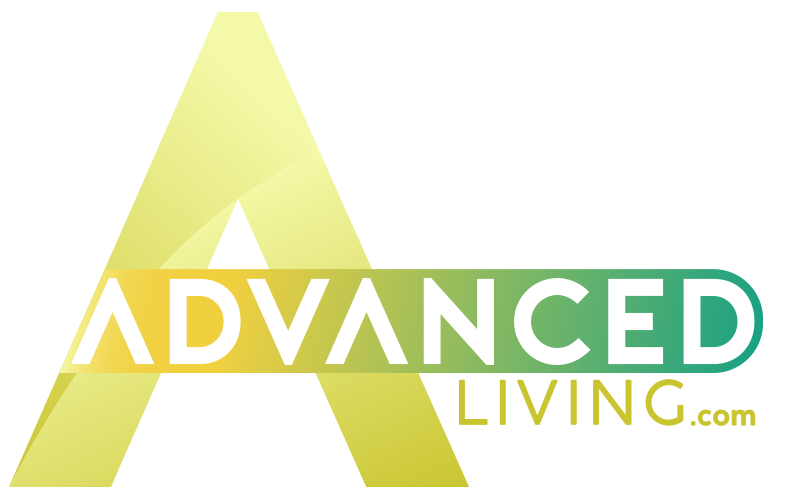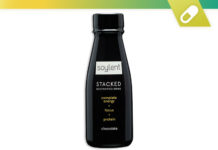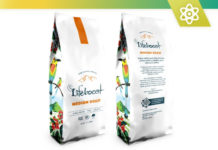Maintaining a healthy body beyond the age of 40 can seem impossible. The process of burning away unwanted body fat while building lean muscle mass and cardiovascular endurance can be even more difficult after 40, as the hormonal balance of the body begins to change, ligaments become less strong and skin begins to lose elasticity.
Beginning a fitness journey beyond the age of 40 is one of the best decisions you can make for your long term health. Strength training at any age will increase lean muscle mass and boost cardiovascular function, while regular cardio training can promote higher flexibility, endurance and balance.
There are a number of factors that can make getting fit slightly more difficult beyond 40, however. The body begins to decrease hormone production, which can slow results, while weakened joints and ligaments can make the risk of injury higher.
Starting a fitness journey at any age requires a small amount of careful research before beginning. The basics of getting fit, however, remain the same at any age.
One of the most important factors in getting fit is knowing your body type. Knowing what kind of exercises and dietary practices work best with your body makes the process of losing weight and building a fitter body far easier and much more effective.
In this three-part series, we’ll outline the best practices, techniques, methods and regimen for building a healthy, fit lifestyle and body beyond the age of 40. In this article, we’ll focus on the process of knowing what type of body you have, and which practices work best for you.
Contents
The Benefits Of Exercise At Any Age
Age can have many detrimental effects on the body. Hormonal imbalances, rapid weight gain, inflammatory diseases and increased chance of most diseases are all caused by age, as well as cosmetic effects such as wrinkles, fine lines and crow's feet.
There are, however, a number of techniques that can be used to minimize the effects of age on the body, maintaining and restoring balance, strength, endurance, flexibility and more. Recent research indicates that maintaining a regular exercise regime or participating in regular physical exercise can minimize the effects of age, restoring the body to a more youthful state and preventing it from further deterioration.
Information released by the American Heart Association has stated that moderately intense physical exercise performed on a regular basis can significantly lower the risk of heart attack and stroke, diabetes, and heart disease, as well as lower both high blood pressure and high cholesterol.
In addition to lowering the risk of developing health complications and preserving the integrity of the body, regular physical exercise offers benefits such as lower stress levels, more regular sleeping habits, better immune system function and higher energy levels, all of which contribute to overall life quality.
Strength training can also have a significant impact on hormone levels, which are especially important for men. From the ages of 20 to 60, the testosterone levels of the male body drop by 2%-4% every year. Testosterone is a critical male hormone responsible for muscle mass, immune system function, cognitive balance and more.
This process of ongoing testosterone level reduction reaches a peak in the early 40’s, and is known as androgenesis. Androgenesis can lead to poor immune system function, excess body fat, low endurance, low libido and more. Strength training and regular physical exercise can reverse this process, boosting testosterone levels back up to youthful levels.
It’s important to remember, however, that although your drive to exercise and get fit may be as strong as it was in your youth, your body may have differing opinions.
Hormonal, physiological and skeletal changes that have occurred over the course of your life should be taken into account. Modifying the intensity and frequency of workout regimes is important to allow your body sufficient time to recover and avoid injuries.
Beyond the age of 40, an average individual will gain 10 pounds every decade. This is primarily due to a loss of lean muscle mass, and an increase in adipose fat deposits. The body loses muscle mass and is generally less active, meaning calories consumed are converted directly into fat deposits instead of being used to maintain muscle. A 10 pound weight increase, for example, is usually caused by a five pound muscle mass loss balanced by a 15 pound increase in fat deposits.
Many people, when confronted by this rapid weight gain, respond by dieting. Dieting without regular physical exercise, however, causes catabolism, or the further breakdown of muscle mass, which exacerbates the weight gain process.
The Importance Of Retaining Muscle Mass
Retaining muscle mass can significantly reduce the speed at which the body converts excess calories into fat. The easiest way to build muscle mass in any body is through a combination of aerobic routines, strength training, stretching, and a healthy, nutritionally balanced diet.
The muscles of the body, when used to perform strength training exercises, are subjected to a damage and repair process called hypertrophy. Hypertrophy boosts the metabolic rate of the body, increasing the speed at which the body burns fat.
A strength training routine generally involves the repetitive lifting of weights through a method called resistance training. Pushing weight with your muscles will cause the cells to become damaged, multiply, and heal. This is generally what causes the soreness after an intense workout session. Increasing muscle mass through strength training will also increase your cardiovascular endurance.
Strength training beyond the age of 40 is typically the same as strength training at any other age, although care should be taken to avoid injury, as injuries take longer to health as the body ages.
It’s likely that overtaxing your body will cause your body to heal slowly and create a sensation of discomfort that will make it unlikely that you will want to continue your fitness program.
Overtaxing your body from the beginning of a regime can cause a quick slide back into sedentary habits, which causes renewed weight gain. Working slowly, methodically and in moderation is the key to success in any fitness plan.
When beginning a new workout regimen, always be sure to stretch extensively beforehand and begin with warm-up exercises that get your body ready for intensive physical output. Beginning with moderate, low impact and low weight exercises will give your body time to adjust. Allowing your body sufficient time between workouts is also critical in avoiding injury and sticking to a long term fitness plan.
Stretching after your workout can also minimize the potential for muscle or joint damage.
Choose The Right Training Program For Your Body Type
The way your body creates new lean muscle mass and burns fat will depend on the type of body you have. Whether you’re aiming to create a bodybuilder like physique, or simply shed a few unwanted pounds, body type plays a large role in the weight loss and muscle gain process.
Body types can be broken down into three separate classifications: endomorph, mesomorph and ectomorph. The endomorph body type is very common in women.
Characterized by rounded hips, larger adipose fat deposits around the stomach, thicker necks that are more prone to weight gain and narrower shoulders, the endomorph body is typically a powerful frame that is able to stack on muscle mass quickly.
Male endomorphs will benefit greatly from strength training and take well to resistance-based weight training. Female endomorphs can profit from cardio training and core strength exercises such as squats and deadlifts.
Ectomorph body frames are typically slim, with minimal body weight and large, long limbs. Ectomorphs generally have a low body fat percentage but find it difficult to gain new muscle mass.
Ectomorphic men generally possess smaller chests and shoulders and can benefit from strength training that focuses on this region, such as the bench or the overhead press. Ectomorphic women excel at long-distance running and extended duration cardiovascular activities.
Mesomorphs are similar to ectomorphs in that they are naturally lean and possess a low body fat percentage, but are typically more muscular and possess higher average strength.
Mesomorph men possess broad, square shoulders and a V shape, while mesomorph women conform to an hourglass figure. Muscle gain and fat loss are easy and fast for both male and female mesomorphs.
Design Your Workout Around Your Body Type
While most people are clearly one body type or another, some people may sit in between one form and another. Knowing your body type will allow you to make informed decisions about your workout regime and dietary habits to get the best results.
Endomorphs, for example, have the potential for a high degree of strength but can store excess adipose fat if a careful diet is not followed. Ectomorphs are thin and fast, but more prone to joint complications and injuries.
Similarly, knowing your body type will help you to set realistic goals about the kind of physique you aim to achieve.
While it’s still possible for an ectomorph to develop huge biceps, it will take a longer time and a lot more training to develop larger arms than it would for an endomorph.
Endeavoring to understand the strengths and weaknesses of your body type will help you to create a tailored workout and nutrition program that will deliver the best results over the long term.
Let’s take a look at three different exercise and nutrition guides designed for the three different body types. All three of these guides have been optimized for fitness enthusiasts over the age of 40, and are designed to burn excess body fat, increase strength, build lean muscle mass, and boost overall fitness.
While these guides are intended to function as “one size fits all” programs, feel free to chop, change, edit, and add new exercises to suit your personal preferences and goals. In each guide, we’re going to split each program into three sections: weight training, cardio, and nutrition. We’ll also provide some unique lifestyle tips for each body type to help you reach your goals faster.
The Endomorph
The endomorph body type is naturally predisposed to making rapid muscle gains, but has the propensity to retain stubborn body fat. Famous endomorphs include Jennifer Lopez, Beyonce, and Ronnie Coleman.
Endomorphs recover faster than mesomorph body types but slower than ectomorphs. Limiting carbohydrate intake is a great way to restrict the growth of body fat for this powerful body type, while increasing protein intake will foster fast muscle growth.
Endomorph Weight Training
Endomorphs should make a point of warming up extensively before working out and stretching to prevent injury before any kind of resistance training.
A split training method works best for endomorphic body types, focusing on one or two body parts each training day and allowing sufficient time for each muscle group to recover. A split that incorporates two days per week for each muscle group is ideal.
Endomorphs will benefit from a rep range of 8-10 reps per set. Other body types benefit from a lower rep range with higher rates, promoting higher hypertrophy rates. For endomorphs, an increased rep volume will provide a higher proportion of work, promoting calorie consumption and reducing lipogenesis, or fat creation. Aim to perform up to 10 reps for each set, with three sets per exercise.
Mixing up muscle training routines will promote muscle confusion in endomorph bodies. While endomorphs are able to push higher weight than other body types, always be sure to increase weight slowly to prevent injury.
If you have an endomorph body type and are sore for more than three days after a workout, consider reducing the total weight used in your exercises to a comfortable level before proceeding.
Endomorphs often experience frequent plateaus, with strength and muscle volume stagnating. To deal with these roadblocks, add weight and reduce the total rep count in your sets to 7-8 reps until you’re able to achieve 10-12 reps, then move forward.
To support the high growth rate of their shoulders, chest and arms, endomorphs should adhere to a strong core strength program. Working out the abs three times a week through compound movements such as squats or dead-lifts, supported by crunches and leg lifts will build a solid core and lower back with which to leverage higher weights.
Endomorph Cardio Tips
Endomorphs should limit their overall cardio to three days weekly. A combination of high intensity interval training and steady state cardio will yield the best results, increasing post-workout metabolism and helping to promote fat burning.
When cardio training, try to keep your heart rate at 70% of your comfortable maximum, and limit cardio to 20 minutes per session. Remember to warm up before cardio sessions, and cool down for five to ten minutes after each session with a low-intensity exercise such as walking.
High intensity cardio exercises are best for the endomorph body type, with machines such as the elliptical machine, rowing machine, or stationary bike providing the best results.
Endomorph Nutrition
Endomorphs need to pay a great deal of attention to their dietary intake. Carbohydrates are the enemy of the endomorph body type, as the body quickly converts these food types into fat. Low carbohydrate, high protein diets will provide the best results.
Protein consumption should be targeted at 1.5 grams of clean, lean protein for each pound of body weight. Breaking down meals into six individual portions to be consumed throughout the day will allow the metabolism to function efficiently, preventing excessive energy storage in the form of fat.
As a general rule, endomorphs should set their daily caloric intake at 10-15 calories per pound of body weight. Protein intake should balance out to one third of total dietary consumption.
Dietary fat should account for 20% of dietary function, and together half of the diet should consist of clean carbohydrates or dietary fiber. The endomorph body type responds extremely well to a ketogenic diet.
Limiting or completely eliminating sugars is a great way to limit caloric intake for the endomorph body type. Dietary fiber, such as pectin, from apple, provides a great energy source for this frame and will help to reduce food cravings caused by low caloric intake.
Slow burning energy sourced from low glycemic index foods such as sweet potatoes, whole grain breads, oats, pasta, beans and corn are perfect for the endomorph diet.
When following a health regime and working towards achieving fitness goals, it’s best to completely cut out or drastically limit alcohol consumption and drink at least eight glasses of water daily. Limiting coffee will also have health benefits.
Habitual smokers should definitely quit smoking while adhering to a fitness program. Quitting smoking also has a wide number of overall health benefits, and should be a priority at the beginning of any fitness regime.
The Mesomorph
The mesomorph body type is naturally athletic and generally has no difficulties in either gaining lean muscle mass or burning unwanted body fat. Broad shoulders and a tapered, V-shaped body type gives mesomorph body types an aesthetic, athletic appearance, but can be easily be disrupted by poor eating habits.
Mesomorphs typically have denser muscle mass than the other two body types which benefits greatly from resistance training. Famous mesomorphs include Sarah Jessica Parker, Madonna, Mark Wahlberg and Arnold Schwarzenegger.
Mesomorph Weight Training
As with both of the other body types, mesomorphs should always warm up before beginning training sessions. Lower rep ranges with higher weights are perfect for the powerful muscles of the mesomorph body shape.
6-8 reps per set, with 3-4 sets per exercise should suffice for this body type, inducing a high rate of hypertrophy that will induce rapid muscle gain. Muscle confusion is also important for mesomorphs, with a slow intensity gradient helping to reduce the likelihood of injury.
While the mesomorph frame is powerful, it’s important to challenge your muscles with a variety of different exercises to promote a balanced and aesthetic physique. Focusing on free weight exercises that incorporate dumbbells and barbells instead of using machines will help to build control and balance while offering an all-over compound training effect.
Mesomorphs should change up their routine once every two months to avoid falling into negative training patterns. A six day split that breaks the muscle groups down into three separate days is ideal for the mesomorph body type. Work out each muscle group twice weekly, with two days rest between each group and a final rest day to promote faster healing and recovery.
Like the endomorph body type, the mesomorph frame is prone to hitting roadblocks or plateaus. To avoid plateaus, add an extra set and another 5% weight incrementally until pushing past temporary limits.
The mesomorph frame is uniquely suited to compound exercises that develop a strong core. Squats, overhead press, and power-lifting exercises will help to create a strong abdominal base.
Aim to work out the abdominals three times weekly with three sets of accessory exercises such as crunches.
Mesomorph Cardio Tips
Like the endomorph body type, the mesomorph body type is prone to stacking on excess weight. While less prone to developing adipose deposits than the endomorph frame, the mesomorph frame will still benefit from lightweight cardio three times weekly.
Always aim to perform cardio with a heart rate at 70% of your comfortable limit. 35 minute sessions of regular cardio is satisfactory for the mesomorph frame. Always warm up before engaging in cardio, and be sure to cool down after performing cardio routines for at least ten minutes.
The rapid rate at which the mesomorph frame is able to build muscle mass actually induces many mesomorphs to neglect cardio training, as they are able to minimize fat gain with little effort. Despite the natural proclivity of this body type to retain a low body fat percentage, it’s important for cardiovascular health to maintain a regular cardio training regime.
Mesomorph Nutrition
A clean diet and proper macronutrient intake are extremely important to the mesomorph body type. As the mesomorph body type is able to build muscle mass rapidly, supplementing with nutritional aids can help bring faster results.
Breaking down dietary intake into five separate meals over the day can help to promote optimal metabolic rates for both muscle growth and fat burning. When balancing macronutrient intake for the mesomorph body type, protein should consist of roughly 30% of dietary intake, balanced by 20% fat content and 50% clean carbohydrate content.
Drinking a protein shake can be a great way to add protein to the mesomorph diet, best taken one hour after an intensive workout session to help prevent catabolism, or the breakdown of muscle tissue.
Using low-fat milk in protein shakes is an effective way to minimize fat intake while boosting protein intake. It’s important to drink at least eight glasses of water every day, as well as cut out as much sugar as possible.
Lower glycemic foods are converted by the body into blood sugar at a slower rate than high glycemic foods, so focusing on following a low GI diet will help reduce hunger cravings.
The Ectomorph
The ectomorph body type is the leanest of the three body types, and typically finds it difficult to gain weight. Also known as “hardgainers”, ectomorphs benefit from an extremely high metabolic rate at the cost of slow lean muscle mass development.
The lightweight frame of an ectomorph body is more susceptible to stress and injury than the other two body types, so it’s important to not over train. Above all, caloric intake is the most important factor for ectomorphs.
Eating a lot of healthy food regularly is the key factor to success as an ectomorph. Famous ectomorphs include Brad Pitt, Kate Moss and Daniel Craig.
Ectomorph Weight Training
Training as an ectomorph requires a different methodology than the other two body types. Both high volume programs and low volume, high weight programs are not ideally suited to the ectomorph frame, as their lightweight body type is more susceptible to stress injuries.
Exercising ectomorph bodies with static rep ranges tends to overload the motor unit being used for the exercise, negatively affecting gains.
A pyramid structure is better suited for the ectomorph body type, allowing motor units to express as much energy as is possible without overworking.
Training an ectomorph body with a pyramid rep structure involves working from a large amount of reps down to a small amount, then using an explosive final set to work the muscle as hard as possible without injury.
The pyramid rep structure was designed by Vince Gironda, one of the earliest bodybuilder celebrities. Also known as the 10-8-6-15 program, this structure requires ectomorphs to work down from 10 reps per set to 8, followed by 6, finishing on 15 reps for the final set.
This program works best when used with a 3-day split that incorporates exercises such as squats, bench press, lateral raises, pull-ups, dumbbell curls, close-grip bench press and v-bar pulldowns.
It’s also important for ectomorphs to rest extensively between sets to allow the nervous system sufficient time to recover.
Ectomorph Cardio Tips
The ectomorph body type needs the least amount of cardio out of all of the body types, and will benefit from restricting cardio exercises to a maximum of two days weekly. Cardio has a tendency to induce catabolism, which breaks down newly-developed muscle mass.
Paired with the large amount of caloric intake it takes the ectomorph to generate new muscle mass, excessive cardio can be seriously detrimental to building the ideal physique for this body type.
Although ectomorphs typically find cardio easy compared to both endomorphs and mesomorphs, it’s important to not neglect stretching and warm up exercises to prevent injury. Static rate cardio is ideal for the ectomorph frame, with long-distance running and stationary cycling exercises the most effective.
Ectomorph Nutrition
Dietary intake is critical for the ectomorph body type. It takes ectomorphs roughly 6000 calories to create one pound of lean muscle mass, which is almost the total caloric intake for three full days. Eating six medium sized meals daily is ideal for ectomorphs, and while ensuring healthy intake is important, ectomorphs are essentially able to benefit from eating everything in sight.
Aim for 1.5 grams of protein for every kilo of body weight and supplement dietary protein intake with protein shakes made with full fat milk. As with the other body types, always ensure dietary intake is 30% protein, 20% fat and 50% carbs.
Drinking at least eight glasses of water a day and consuming low glycemic index foodstuffs also assists with the muscle development process.
Final Notes On Body Type
While training methodology may differ for each of the three body types, there are a number of rules that can be applied to all body types. Lifting weights and performing cardio on a regular basis and maintaining a regular schedule is essential to growth and development.
Sleep hygiene is critical for all body types, as the body will recover during REM sleep cycles, helping to foster both the breakdown of fat and the development of new lean muscle mass.
Warming up and stretching is essential before both cardio and weight training, as beginning slowly with lighter weights to prevent injury. Eating clean and supplementing the diet with resources that are otherwise unavailable can make reaching health and fitness goals far easier.
Drinking at least a gallon of water every day and increasing your protein intake will provide your muscles with sufficient raw materials to develop quickly.
Bear in mind that even under ideal conditions, a body beyond the age of 40 will not respond as quickly as a more youthful frame, but will still respond to exercise in the same manner. Consistency and commitment are the keys to fitness success at any age.
Remember to maintain a positive and determined outlook, and results will be dramatic and surprising. Getting fit is the best choice you can make for your health at any age. Moving forward in part two of our Health & Fitness Beyond 40 series, we’ll examine the basics of muscle building and break down the processes that occur in the body when new muscle tissue is being developed to help you achieve your fitness and physique goals faster.













![Bowflex Max Total: 2024 Fitness Workout Exercise Machine [Review] Bowflex Max Total: 2020 Equipment Review For Complete Upper and Lower Body Workout](https://www.advancedliving.com/wp-content/uploads/2019/12/Bowflex-Max-Total-218x150.jpg)

